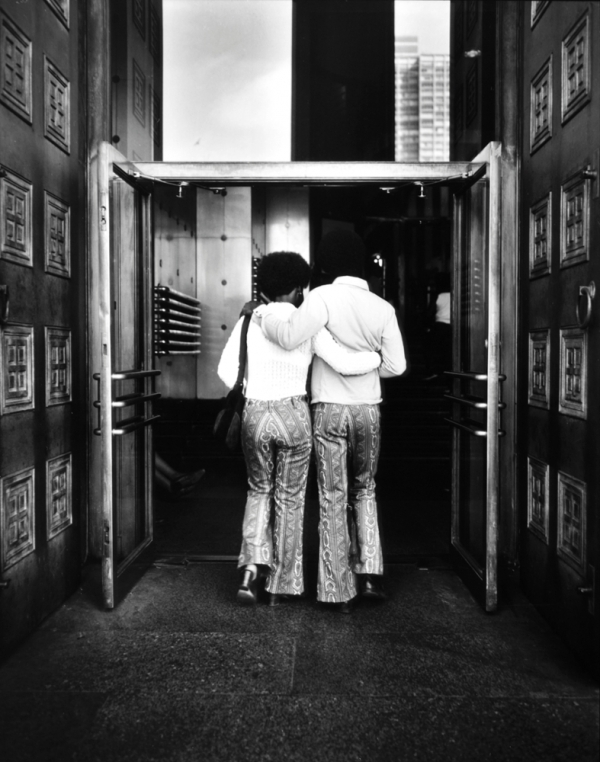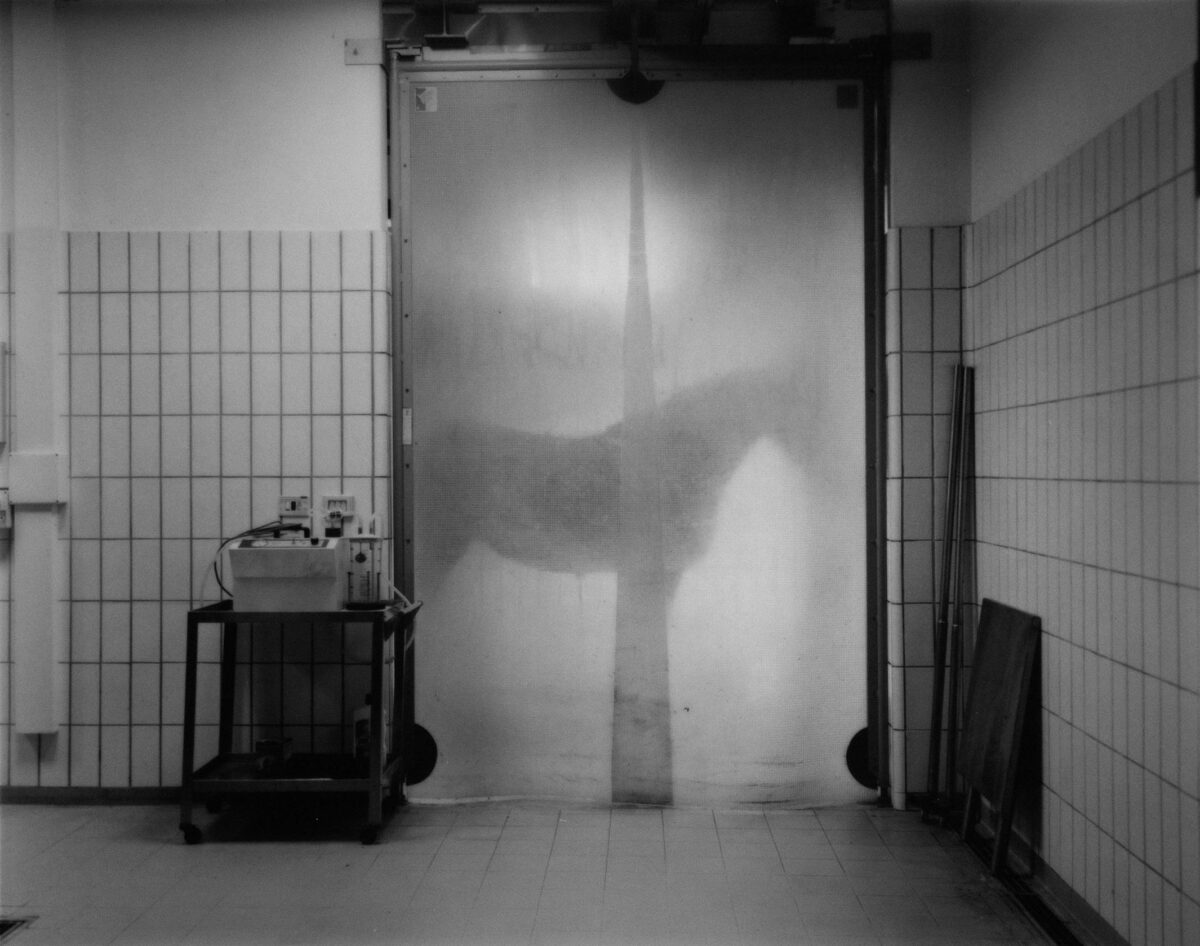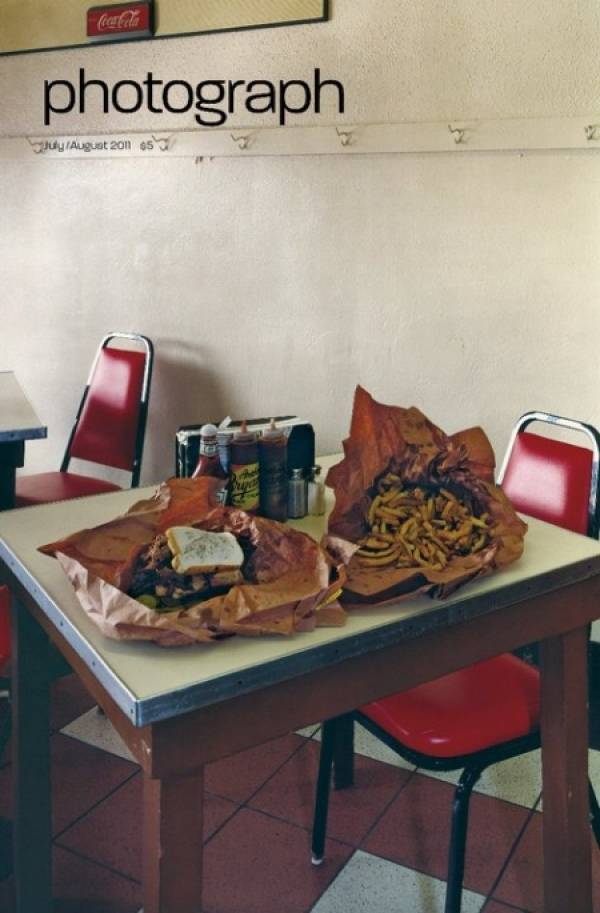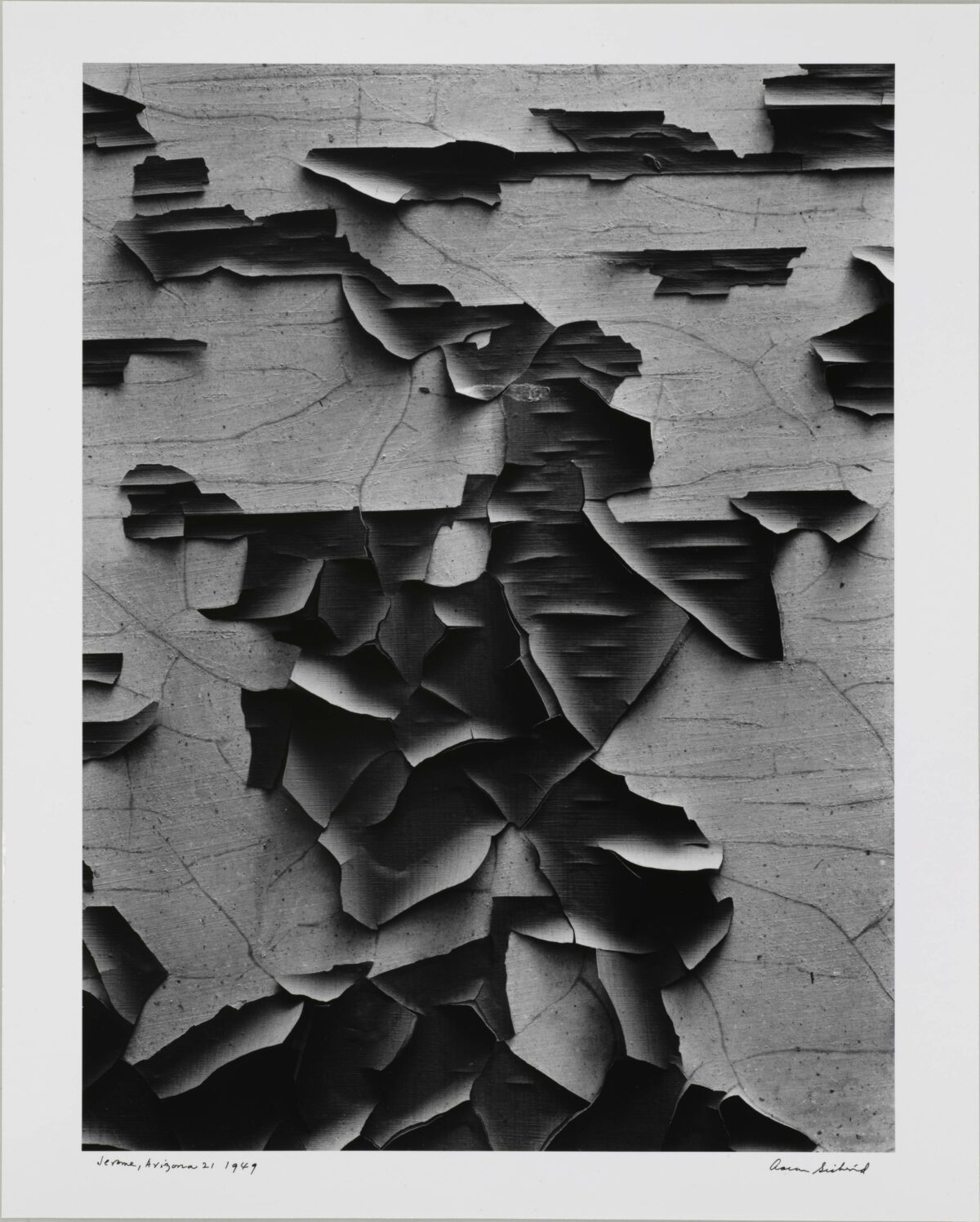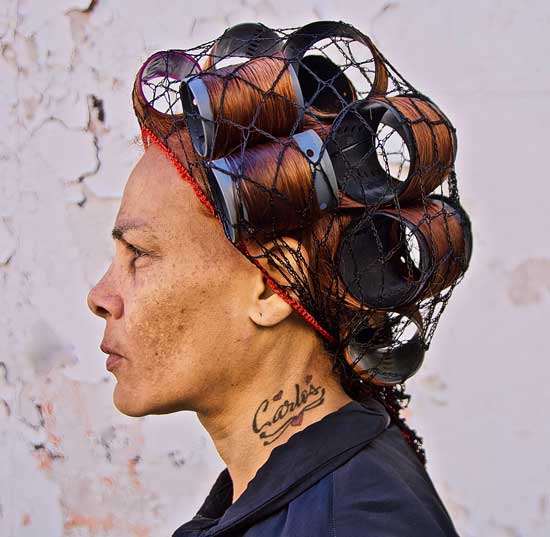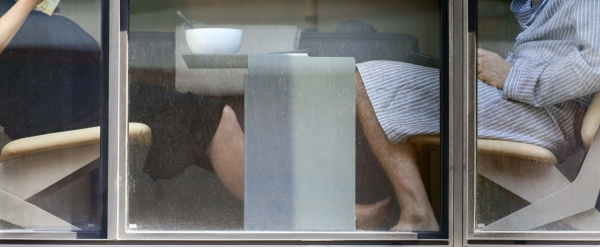

What does it mean to queer photography?
San Francisco-based photographer Marcela Pardo Ariza takes on that question in Slow Clap, at R/SF Projects through October 8.
Semantically speaking, “queer” challenges the term “straight” as it exemplifies un-manipulated photographs that purport to deliver unfiltered truths and mark the medium’s modern era. Ariza laces her images of familiar subjects – portraits and landscapes, for instance – with ambiguity and gender fluidity.
The titular image, Slow Clap, riffs on Albrecht Dürer’s ink-and-pencil sketch Praying Hands (1508). Ariza playfully adapts the German master’s cool blue composition, familiar from funeral cards and popular cultural references, introducing contemporary elements such as a colored frame, frayed denim jacket, and the tattoos adorning the sitter’s hands. Is this a moment of prayer or applause? On the opposite wall, Sunny Side Up portrays a beach scene complete with palm trees and a blazing sunset, but there’s a twist. Ariza repurposed a commercial mailing envelope featuring the scene and added an extra sun by breaking an egg over the envelope and photographing it. It’s a good-natured jab at the ubiquitous vacation snaps that saturate social-media platforms so completely that it’s difficult to determine what is and isn’t “authentic.”
Ariza toys with the convention that photographs are two-dimensional, wall-bound objects by playing with the exhibition space itself. Each of the installation’s eight photographs occupies its own space, which is intensified by vibrant latex paint that extends from the wall to the floor – tangerine for the Bas Jan Ader- referent I’m Too Sad to Tell You and salmon-pink for Congregation, for example – deviating from the “straight” institutional practice of presenting art on neutral-toned walls.
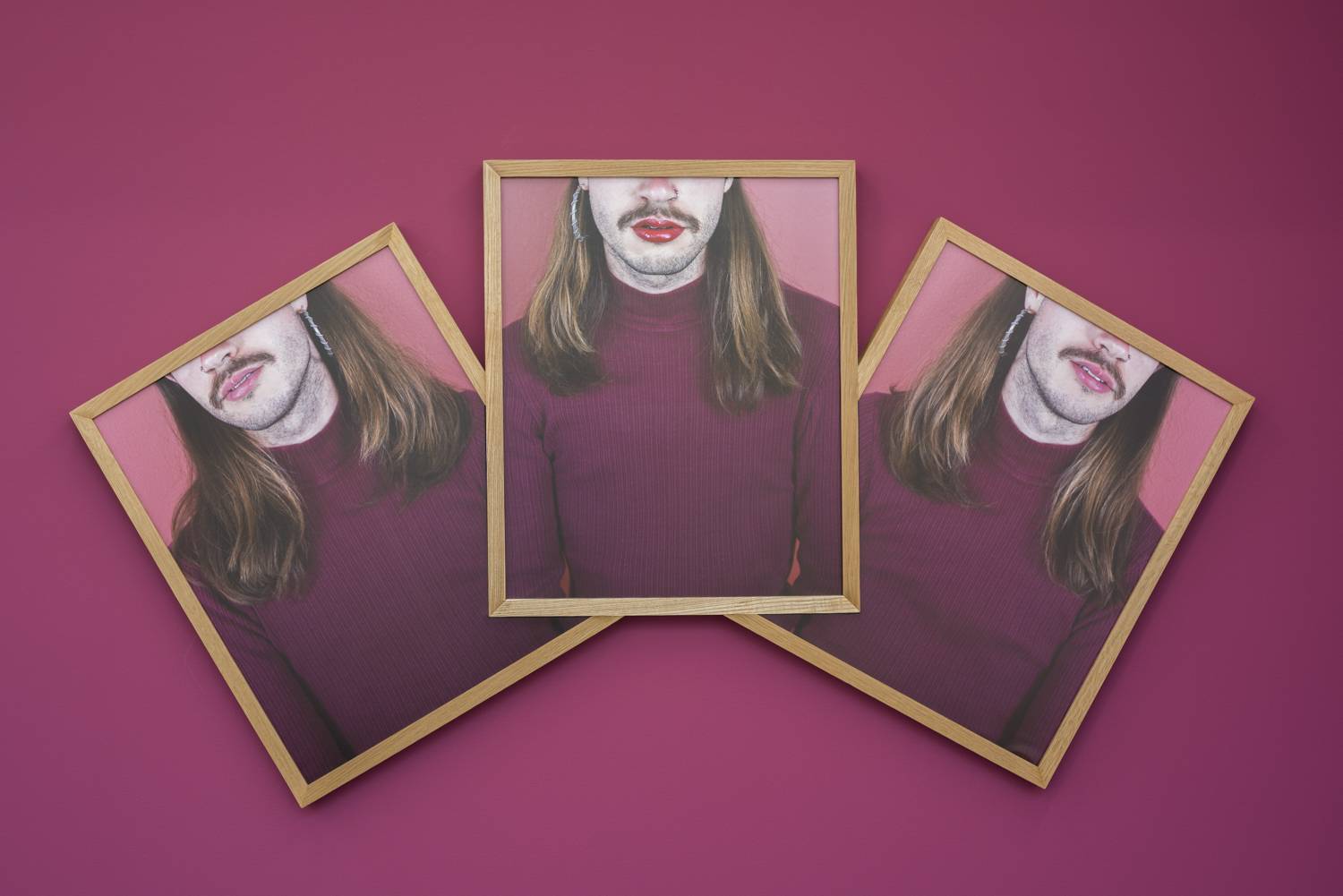

More importantly, Ariza queers photography’s history of heteronormative portrayals of gender. Cerberus, named for the mythical, three-headed “Hound of Hades,” is imagined as a male-presenting subject wearing lipstick, for example. On the second floor, the vinyl installation Congregation depicts a gathering in which all the participants turn away from the viewer. We’re denied the chance to examine each sitter’s face for clues to who they are. Both installations gesture to photography’s role in shaping personal and public identity and point to the exhibition’s inherent premise: nothing is as it seems, and photography cannot be trusted.

